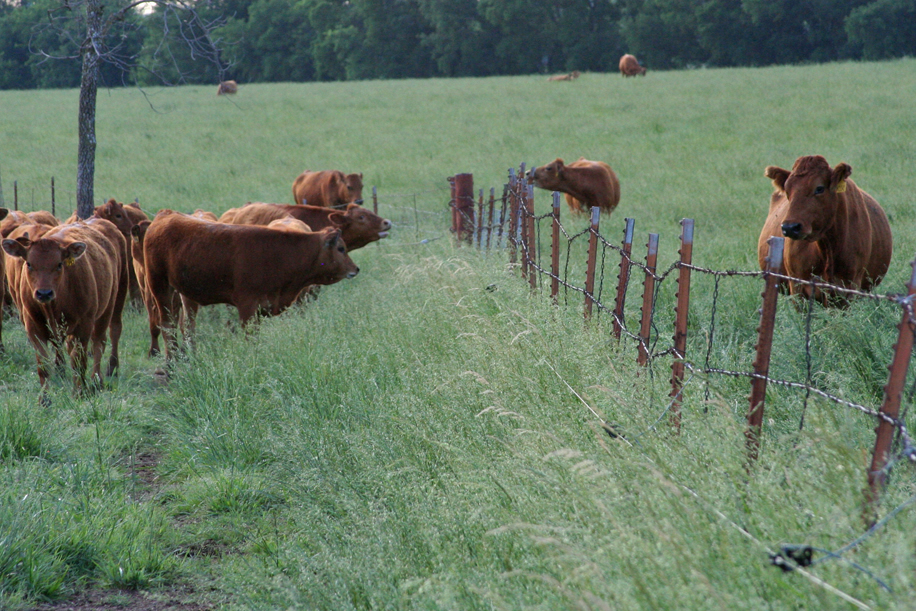
Agricultural News
Part One of Management Practices for Cows at Weaning with OSU's Mark Johnson
Tue, 14 Sep 2021 13:15:56 CDT
 Weekly, Oklahoma State University Extension Beef Cattle Breeding Specialist Mark Johnson offers his expertise on cattle breeding. This is a part of the weekly series known as the "Cow-Calf Corner" published electronically by Derrell Peel. Today, Johnson talks about Part I of management practices for cows during weaning.
Weekly, Oklahoma State University Extension Beef Cattle Breeding Specialist Mark Johnson offers his expertise on cattle breeding. This is a part of the weekly series known as the "Cow-Calf Corner" published electronically by Derrell Peel. Today, Johnson talks about Part I of management practices for cows during weaning.
"In spring calving herds, weaning season is upon us. At this time, it's not only important to focus time and management on ways to eliminate stress, maintain health and maximize the value of weaned calves, but also a critical time to manage the cow herd. Cows are basically the "production factory" in cow-calf production. They take raw material (grass and supplemental feed) and turn it into a weaned calf to be sold as a return on the cost of production. There is a cost of maintaining a cow each day we own her. Cows should sustain themselves primarily on the resource of forage, get bred and wean off a healthy calf each calendar year. A defined breeding season (optimally 45 - 90 days) is an important part of managing a herd for profitability and makes the "best management practices" discussed this week possible. For example, if bulls are turned out on April 1st and pulled June 15th, the calving season that follows should start about January 8th and end by March 22nd. When we wean those calves at 6 - 8 months of age, it is a good time to run cows through the chute and take a look at the following:
- Pregnancy Status: Are cows open or bred, and how heavy bred are the cows? This not only helps to make potential culling decisions on the opens, but also indicates if cows are staying on schedule. Cows that calve later year after year indicate we may need to take corrective action in our breeding, feeding or herd health program.
- Mature Weights: At this time of year mature cow size is informative in planning for winter hay/supplemental feed needs. All herds have variation in mature cow size. That being so, if you have 80 dry cows to take through the winter, it helps with planning to know if the average mature cow size is 1200 lbs. or 1450 lbs.
- Body Condition Scores (BCS): One of the major constraints in improving reproductive efficiency is the duration of the post-calving anestrous period. If cows are to maintain a calving interval of one year, they must conceive within 80 - 85 days after calving. Body condition score at the time of calving determines subsequent rebreeding performance to a great extent. A BCS of 5.5 or better at calving is recommended for cows. It is normal to expect cows to be milked down and at their thinnest BCS at weaning time. If body condition needs to be regained prior to calving, the most efficient time to put flesh back on cows is while they are dry.
- Herd Health: (vaccinations and deworming). In modern animal agriculture, the focus is on optimizing herd health, efficient production and maximizing net return to the business unit. Working with a veterinarian will allow you to develop a health program meeting your specific needs.
- Evaluate cows on an individual basis for soundness of: udder, eyes, mouths, feet, legs, joints and disposition.
- Individual Identification: calving records and records of birth dates are helpful. This is a good time to replace ear tags as needed. Cow age is an important factor to take into account along with other information collected to make the best management decisions.
"Management decisions based on sound information increase the profit potential of cow-calf operations. Information collected on your cow herd can be used in several ways to improve breeding programs, forage budgeting, marketing and other judgement calls you need to make to improve your operations bottomline. Over the next few weeks we will continue to take a closer look at what some basic information collected on cows at weaning can tell us."
WebReadyTM Powered by WireReady® NSI
Top Agricultural News
More Headlines...





